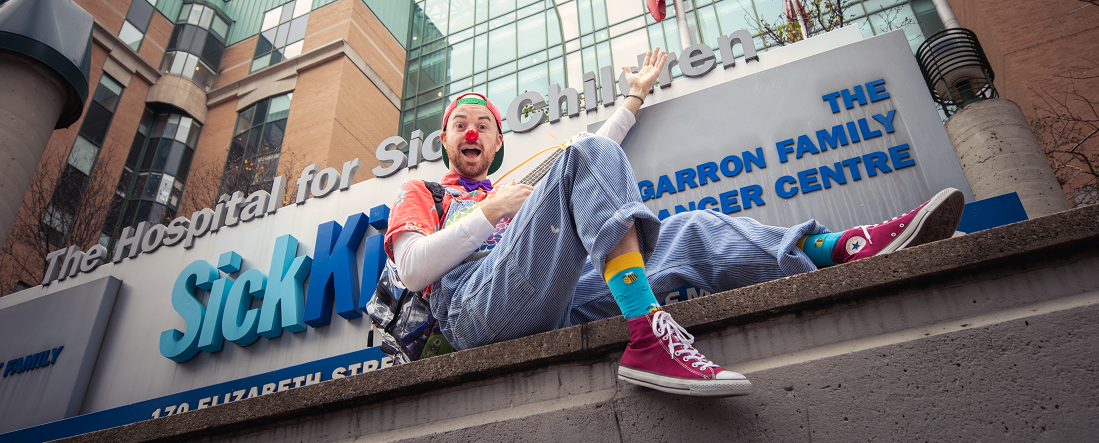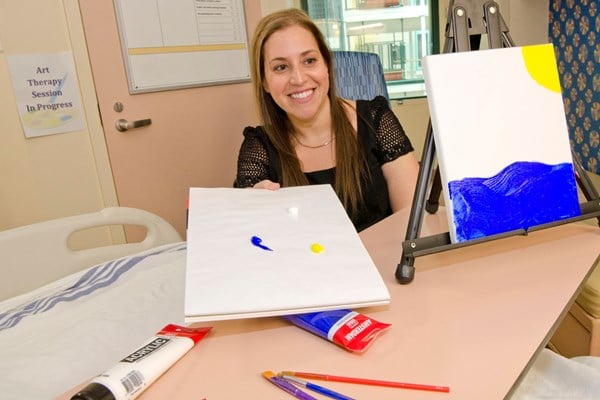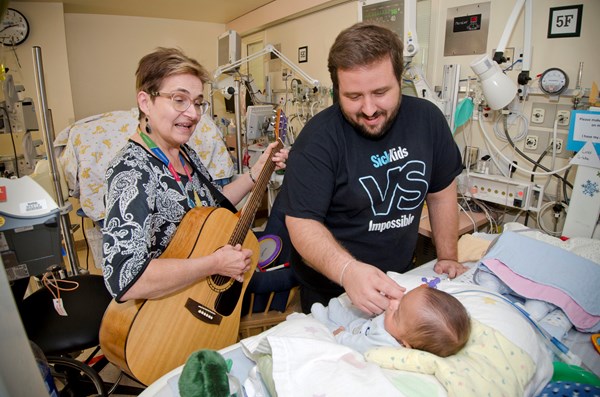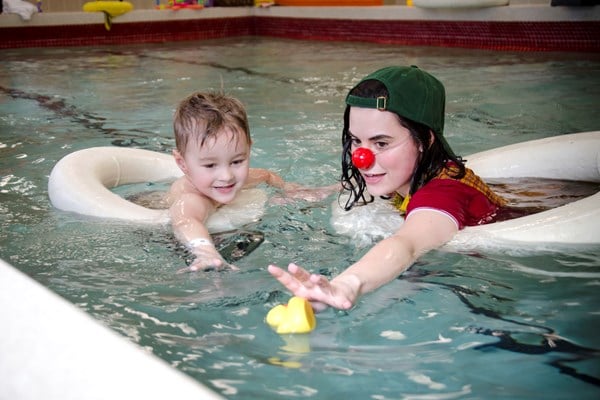Creative Arts Therapy
The Creative Arts Therapy program supports the health and wellbeing of children, youth and families through therapeutic relationships using music, art and play.
Questions about Creative Arts Therapy and referrals? Email: creativearts.therapy@sickkids.ca


Art Therapy
Art therapy is a mental health profession in which patients, assisted by the art therapist, use art materials to explore and express thoughts and feelings through creativity. The goal of art therapy is to support the healing process and improve a patient’s physical, mental and emotional well-being. Art therapists are trained in both art and psychology, and have knowledge about the psychological role of the creative process and the impact of using different art materials and techniques.
Training opportunities in art therapy
The art therapy program provides placements to art therapy students from post-graduate programs recognized by the Canadian Art Therapy Association. For information on training opportunities please contact us.
Art therapy for caregivers
Join the art therapist on Mondays from 10 a.m. to noon in Marnie’s Studio for an art therapy program for parents and caregivers. These drop-in sessions allow adult participants a chance to engage in therapeutic art making, meet other hospital parents and caregivers and take a moment for themselves in a supportive space.
FAQs about art therapy
Art is a natural language for children. It can help them make sense of and express their thoughts and feelings and improve coping. Through the process of creating art and working with an art therapist within a supportive, therapeutic relationship, a patient can:
- Explore their feelings
- Process emotional conflicts
- Build self-awareness and increase self-esteem
- Reduce stress and anxiety
- Use metaphor and symbolism to express themselves
- Make choices to gain a sense of control in a medical environment; and
- Express and begin to work through issues surrounding hospitalization, diagnosis and symptoms.
One-on-one art therapy sessions happen in a patient’s room at the bedside. Each art project is led by the patients and their interests, though the art therapist may choose to use certain materials to support particular goals. Depending on a child’s age, sessions range from 30 to 60 minutes.
Sessions include time for art making and time for the art therapist to talk in a supportive environment about what the child created and their experience of art making. However, art therapy can also be a helpful tool for patients who feel more comfortable communicating nonverbally through a creative outlet than talking about their experiences.
An art therapist must have graduate level training (Diploma, Master degree and/or Post-Master Certificate) in art therapy from a program that meets educational standards recognized by the Canadian or American Art Therapy Associations. In Canada, art therapists are able to become registered with the Canadian Art Therapy Association or provincial affiliates and they may also become Registered Psychotherapists within the Ontario College of Registered Psychotherapists.
Unlike art classes that focus on what the art looks like when it is finished, the focus of art therapy is on the art making process and the thoughts and feelings that come forward. Art therapy encourages exploring different art materials, structured mess making, and experimenting with techniques in a safe space to enhance coping, build self-esteem and a sense of accomplishment.
Art therapy is available for patients ages 5 to 18 years of age from any inpatient area in the hospital who need support coping with experiences around illness and hospitalization.
Referrals can be made by speaking with your child’s nurse, physician, social worker, child life specialist or other member of the health-care team.

Music Therapy
Music therapy is a discipline in which credentialed professionals (*Music Therapist Accredited/Musicothérapeute accrédité) use music purposefully within therapeutic relationships to support development, health, and well-being. Music therapists use music safely and ethically to address human needs within cognitive communicative, emotional, musical, physical, social, and spiritual domains.
Training opportunities in music therapy
The music therapy program offers various internship opportunities throughout the year. For information on training opportunities please contact us.
FAQs about music therapy
Music therapy can help the whole person: body, mind and spirit. Through making and responding to music, benefits may include:
- Expressing emotion,
- Expressing creativity,
- Lowering pain and anxiety,
- Helping to be more relaxed and to sleep; and
- Making hospital stay more positive.
We typically think of music as entertaining or fun. While this is true there are many other reasons why music can be therapeutic. No matter how young a person is, what language they speak, or if they can speak at all, music can help children communicate without words! Music can adapt to whatever the child is experiencing and is especially good at helping kids express their feelings.
A music therapist must have graduate level training (Undergraduate or Graduate degree) in music therapy from a program that meets educational standards recognized by the Canadian Association of Music Therapists (CAMT).
In Canada, music therapists must become accredited through the CAMT and they may also become Registered Psychotherapists within the Ontario College of Registered Psychotherapists.
Your child does not need to know how to play an instrument to participate in music therapy. In music therapy, music becomes a way for the child to express themselves through exploration and making music with the music therapist.
Any member of the multi-disciplinary team or a parent can make a referral. To make a referral, speak with your child’s child life specialist, nurse, physician, or social worker.

Therapeutic Clowning
If you’re coming to SickKids, we would love to have a chance to be your friend! We can come right to your room and we’ll ask you if you’d like to play. We love to play! If you have a clinic appointment – maybe we’ll see you there too! Or one of our family spaces even! Oh, and we promise we will always let you decide if you’d like us to come play or not. You’re the boss!
How therapeutic clowns help
Therapeutic Clowns create a safe space for emotional expression, empowerment, and social interaction. They are specially trained to adjust their approach according to the developmental, emotional, and physical needs and abilities of the child or youth with whom they are interacting. Therapeutic Clowns have been playing, laughing and making friends at SickKids since 1993.
Play and laughter are essential parts of physical, cognitive, social and emotional development. Our therapeutic clowns provide children and youth with opportunities for play to help them achieve their developmental potential.
Therapeutic clowns are faithful companions to SickKids patients. Central to the SickKids style of therapeutic clowning is the idea that the clown has come from the child’s world outside of the hospital to journey with them. They are special “clown friends” that children and youth can rely on for positive, non-judgmental and gentle fun.
Therapeutic clowns empower children and youth by ALWAYS asking to enter a room, and ALWAYS asking for permission to play. The patient and family decide how they would like to interact with them.
When appropriate, SickKids therapeutic clowns provide distraction before, during and after medical procedures.
Humour and laughter can help create a positive and hopeful attitude. A good laugh relaxes tense muscles, sends more oxygen into the lungs and lowers blood pressure.

